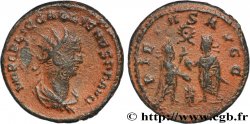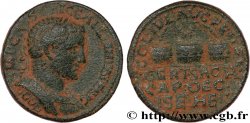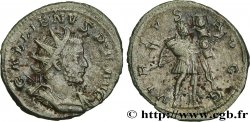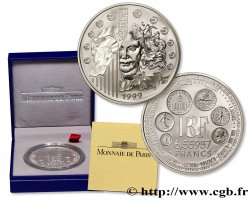v45_0515 - GALLIENUS Sesterce, (GB, Æ 30)
MONNAIES 45 (2010)
Starting price : 195.00 €
Estimate : 300.00 €
unsold lot
Starting price : 195.00 €
Estimate : 300.00 €
unsold lot
Type : Sesterce, (GB, Æ 30)
Date: 253-255
Mint name / Town : Roma
Metal : copper
Diameter : 30 mm
Orientation dies : 6 h.
Weight : 16,60 g.
Rarity : R2
Emission: 1re
Coments on the condition:
Exemplaire sur un flan ovale et irrégulier, bien centré des deux côtés. Beau portrait de Gallien. Frappe molle au revers avec une usure importante, mais parfaitement lisible et identifiable. Belle patine vert noir légèrement tachée au revers
Catalogue references :
Obverse
Obverse legend : IMP C P LIC GALLIENVS AVG.
Obverse description : Buste lauré et cuirassé de Gallien à droite drapé sur l’épaule, vu de trois quarts en avant (B*01).
Obverse translation : "Imperator Cæsar Publius Licinius Gallienus Augustus", (L’empereur césar Publius Licinius Gallien auguste).
Reverse
Reverse legend : CONCORDIA EXERCIT/ S|C.
Reverse description : Concordia (la Concorde) debout de face regardant à gauche, tenant une patère de la main droite et une double corne d’abondance de la gauche.
Reverse translation : “Concordia Exerciti”, (La Concorde de l’armée).
Commentary
Rubans de type 1. Ptéryges invisibles sous le paludamentum.








 Report a mistake
Report a mistake Print the page
Print the page Share my selection
Share my selection Ask a question
Ask a question Consign / sell
Consign / sell
 Full data
Full data










